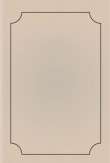href="@public@vhost@g@gutenberg@html@files@38887@[email protected]#Page_58" class="pginternal" tag="{http://www.w3.org/1999/xhtml}a">58
| |
| CHAPTER V |
| STUDIES IN LITERARY TECHNIQUE |
| Narrative Art |
63 |
| Movement |
66 |
| Aids to Description: The Point of View |
67 |
| Selecting the Main Features |
70 |
| Description by Suggestion |
73 |
| Facts to Remember |
75 |
| |
| CHAPTER VI |
| STUDIES IN LITERARY TECHNIQUE—CONTINUED |
| Colour: Local and Otherwise |
79 |
| What about Dialect? |
84 |
| On Dialogue |
86 |
| Points in Conversation |
91 |
| "Atmosphere" |
94 |
| |
| CHAPTER VII |
| PITFALLS |
| Items of General Knowledge |
96 |
| Specific Subjects |
98 |
| Topography and Geography |
100 |
| Scientific Facts |
101 |
| Grammar |
103 |
| |
| CHAPTER VIII |
| THE SECRET OF STYLE |
| Communicable Elements |
105 |
| Incommunicable Elements |
110 |
| |
| CHAPTER IX |
| HOW AUTHORS WORK |
| Quick and Slow |
116 |
| How many Words a Day? |
119 |
| Charles Reade and Anthony Trollope |
122 |
| The Mission of Fancy |
127 |
| Fancies of another Type |
129 |
| Some of our Younger Writers: Mr Zangwill, Mr Coulson Kernahan, Mr Robert Barr, Mr H. G. Wells |
132 |
| Curious Methods |
134 |
| |
| CHAPTER X |
| IS THE SUBJECT-MATTER OF NOVELS EXHAUSTED? |
| The Question Stated |
138 |
| "Change" not "Exhaustion" |
142 |
| Why we talk about Exhaustion |
145 |
| |
|
|



